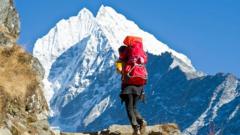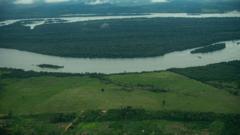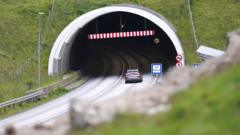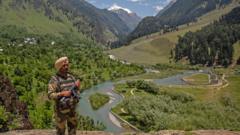Nepal's tourism department has announced that 97 Himalayan peaks will be free to climb for the next two years in an effort to enhance tourism in less-traveled regions as Everest climbing fees rise.
Nepal Opens 97 Peaks for Free Climbing to Boost Tourism Amid Everest Surge

Nepal Opens 97 Peaks for Free Climbing to Boost Tourism Amid Everest Surge
Nepal's initiative aims to promote lesser-known peaks as climbing fees for Everest increase.
Despite the stunning vistas of Nepal’s more remote peaks, climbers have shown little interest in these locations, especially compared to Everest. With Everest permit fees increasing to $15,000 for the upcoming season—marking the first fee hike in nearly a decade—this new initiative seeks to direct attention toward Nepal's unexplored climbing opportunities. The waived fees apply to peaks in Karnali and Sudurpaschim provinces, which are among the poorest in the country and only house climbs ranging from 5,970m to 7,132m high.
According to Himal Gautam, director of Nepal’s Tourism Department, making these mountains free to climb will not only create jobs but also help boost local economies. However, he acknowledged the challenges of accessibility, noting that these regions currently receive low tourist traffic. Over the past two years, these lesser-known peaks have only attracted a mere 68 climbers, in stark contrast to the 421 climbing permits issued for Everest in 2024 alone.
Concerns are mounting regarding the implications of a potential influx of climbers on local communities and infrastructure, which currently lacks the capacity to handle large numbers of visitors, should the free-to-climb initiative gain traction. Over the years, Everest has become increasingly crowded, prompting the Nepalese Supreme Court to mandate limits on mountaineering permits to protect the environment and the climbers’ experience. A new law is also being debated that would require climbers to have previously summited a mountain over 7,000m in Nepal before attempting Everest, positioning the lesser-known peaks as prime training opportunities, according to reports.
While the initiative may present new opportunities for Nepal’s tourism development, the need for improved infrastructure and the local community's readiness for these changes will be critical in shaping the success of this program.
According to Himal Gautam, director of Nepal’s Tourism Department, making these mountains free to climb will not only create jobs but also help boost local economies. However, he acknowledged the challenges of accessibility, noting that these regions currently receive low tourist traffic. Over the past two years, these lesser-known peaks have only attracted a mere 68 climbers, in stark contrast to the 421 climbing permits issued for Everest in 2024 alone.
Concerns are mounting regarding the implications of a potential influx of climbers on local communities and infrastructure, which currently lacks the capacity to handle large numbers of visitors, should the free-to-climb initiative gain traction. Over the years, Everest has become increasingly crowded, prompting the Nepalese Supreme Court to mandate limits on mountaineering permits to protect the environment and the climbers’ experience. A new law is also being debated that would require climbers to have previously summited a mountain over 7,000m in Nepal before attempting Everest, positioning the lesser-known peaks as prime training opportunities, according to reports.
While the initiative may present new opportunities for Nepal’s tourism development, the need for improved infrastructure and the local community's readiness for these changes will be critical in shaping the success of this program.



















